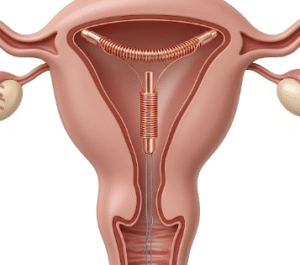Overview
Pituitary tumors are abnormal growths in the pituitary gland, a pea-sized organ located at the base of the brain that regulates many of the body’s essential hormones. Most pituitary tumors are noncancerous (benign) and slow-growing. However, even benign tumors can cause significant health problems by overproducing hormones or pressing on nearby structures, such as the optic nerves. Early diagnosis and treatment are essential for preventing complications and restoring hormonal balance.
What is a Pituitary Tumor?
A pituitary tumor is a mass that forms in the pituitary gland, which controls major body functions by releasing hormones that influence growth, metabolism, reproduction, and stress response. These tumors are classified by their:
- Functionality:
- Functioning (hormone-producing) tumors
- Non-functioning (non-secreting) tumors
- Size:
- Microadenomas (less than 10 mm in diameter)
- Macroadenomas (greater than 10 mm; more likely to cause symptoms from pressure)
Types of functioning pituitary tumors include:
- Prolactinomas – overproduce prolactin
- Growth hormone (GH)-secreting tumors – cause acromegaly or gigantism
- Adrenocorticotropic hormone (ACTH)-secreting tumors – lead to Cushing’s disease
- Thyroid-stimulating hormone (TSH)-secreting tumors – rare, cause hyperthyroidism
- Gonadotropin-secreting tumors – very rare, may affect reproductive function
Symptoms
Symptoms of pituitary tumors depend on their type, size, and hormone activity:
Hormonal symptoms (due to excess or deficient hormone production):
- Irregular menstrual cycles or infertility (prolactinomas)
- Unusual growth of hands, feet, or facial features (GH excess)
- Weight gain, high blood pressure, and skin changes (Cushing’s disease)
- Heat intolerance, palpitations (TSH excess)
- Fatigue, low libido, or erectile dysfunction
- Delayed or early puberty in children
Pressure-related symptoms (due to tumor size):
- Headaches
- Vision loss, especially loss of peripheral vision
- Nausea and vomiting
- Facial numbness or pain
- Dizziness or difficulty with balance
- Pituitary apoplexy (sudden bleeding into the tumor, a medical emergency)
Causes
The exact cause of most pituitary tumors is unknown. However, several factors may contribute:
- Spontaneous genetic mutations in pituitary cells
- Inherited conditions, such as:
- Multiple Endocrine Neoplasia type 1 (MEN1)
- Carney complex
- McCune-Albright syndrome
- Hormonal imbalances or feedback dysfunctions in the endocrine system
In most cases, pituitary tumors occur sporadically without a clear cause.
Risk Factors
Though pituitary tumors can affect anyone, certain factors increase risk:
- Family history of pituitary tumors or genetic endocrine disorders
- Age – more common in adults between 30–60 years
- Genetic syndromes (e.g., MEN1)
- Exposure to radiation to the head (rare)
- Female gender – prolactinomas are more common in women
Complications
Untreated or large pituitary tumors may lead to serious complications:
- Permanent vision loss due to optic nerve compression
- Hypopituitarism – decreased hormone production
- Pituitary apoplexy – sudden tumor bleeding, causing severe headache and neurological symptoms
- Infertility and sexual dysfunction
- Heart disease, diabetes, or osteoporosis due to hormone imbalances
- Growth abnormalities in children (gigantism or delayed growth)
- Emotional and psychological stress from chronic symptoms
Prevention
There is no guaranteed way to prevent pituitary tumors, but early detection and proper care can reduce risks. Prevention strategies include:
- Routine monitoring for people with family history of endocrine tumors
- Genetic testing and counseling in high-risk families
- Regular health check-ups for hormonal symptoms
- Prompt evaluation of unexplained headaches, vision changes, or growth abnormalities
- Management of underlying conditions that affect hormonal balance
Treatment Options in Korea
South Korea is renowned for its cutting-edge neurosurgery, endocrinology, and personalized medical care, making it an ideal destination for diagnosing and treating pituitary tumors.
1. Medical Therapy
- Dopamine agonists (e.g., cabergoline, bromocriptine) for prolactinomas
- Somatostatin analogs (e.g., octreotide) or GH receptor blockers for acromegaly
- Adrenal enzyme inhibitors for Cushing’s disease before surgery
- Hormone replacement therapy for pituitary insufficiency
2. Surgical Treatment
- Transsphenoidal surgery: Minimally invasive procedure through the nose to remove the tumor
- Endoscopic techniques: Widely used in Korea, offering fast recovery and minimal scarring
- Craniotomy: Reserved for very large or invasive tumors
3. Radiation Therapy
- Gamma Knife radiosurgery: Focused radiation for small or residual tumors
- Fractionated radiation therapy: Used when the tumor is near critical structures
4. Comprehensive Diagnostic Support
- High-resolution MRI and CT scans
- Hormonal blood tests and dynamic pituitary testing
- Visual field testing to evaluate optic nerve involvement
5. Integrated Multidisciplinary Care
Top hospitals such as Seoul National University Hospital, Samsung Medical Center, and Severance Hospital provide:
- Neurosurgery, endocrinology, ophthalmology, and radiology collaboration
- English-speaking care teams for international patients
- Genetic screening for hereditary cases
- Long-term hormone replacement and monitoring programs
Korea’s advanced healthcare system offers patients rapid diagnosis, effective treatment, and long-term management for pituitary tumors with excellent outcomes and patient support.













